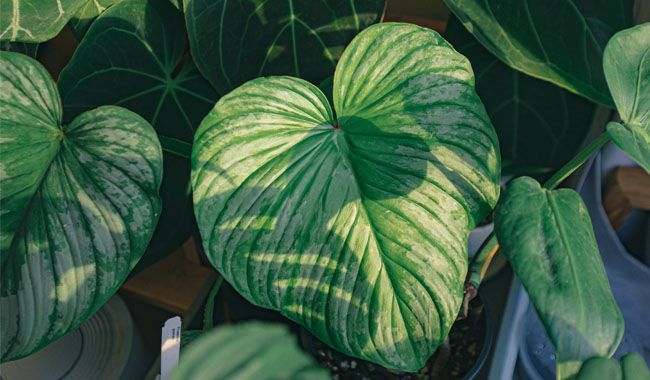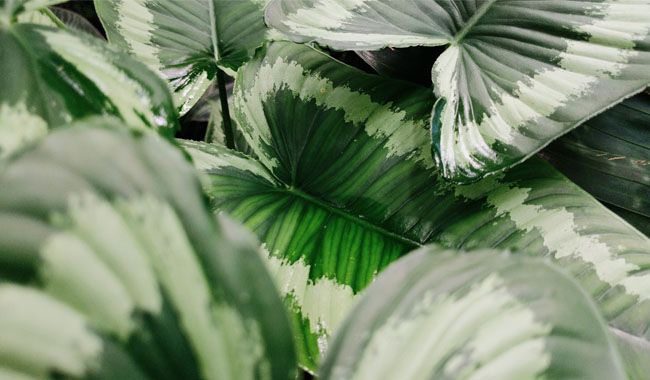
If you’re tired of the classic Peace lily and Dumb canes and are ready for more elaborate care for decoration, then you can check out the spectacular macrophyte Homalomena. Its huge leaves in lush bushes make for a standout indoor classic. But you can’t say it’s a plant for any home or habitat. To make its foliage look truly gorgeous, you need to consider the need for high air humidity and consistent soil moisture. And light also plays a role in the health and coloring of the plant.
HOMALOMENA PLANT DESCRIPTION
Homalomena is a genus of flowering plants in the family Tennantaceae. Homalomena is found primarily in South Asia and the Pacific Southwest, but few are native to Latin America. Many Homalomena have a strong aniseed odor and have been included in the popular ornamental foliage plants for some time. It has been promoted as an alternative to Peace lily, Aglaonema, and Dumb canes, ignoring the fact that this plant is also more capricious in addition to its benefits.
It does resemble Dumb canes in part, but not in leaf shape and growth rate: the lower, “rosette-like,” slower-growing Homalomena is less deformed and more “stable.” It differs from Aglaonema in its leathery, glossy, brightly colored leaves that open differently.
Homalomena is a showy evergreen perennial with huge leaves. It stands at a surprisingly tall height of about 10 inches (25 cm), but the vast leaves make it look bulky. The rosettes are dense and deceptively diffuse due to the size of the leaves reaching out in all directions. Homalomena’s rooted, with a long, deep red thin petiole and perfect heart shape, leaves grow to 8 inches (20 cm) long and slightly smaller in width.
Homalomena is considered a beautiful example of dark green hues – olive, emerald, silver. This plant is very versatile; it can be either monochromatic or speckled, often with colored veins. Unfortunately, the ornamental form is usually not recognizable, with no name on the body surface.
The flowering of Homalomena is considered extremely rare. The plant produces long flowering stems crowned by the familiar gossamer inflorescence with a yellowish veil, which is often seen in its brothers. Flowering tends to impair the decorative nature of the foliage and accelerate its aging, so Homalomena can be immediately restricted in this regard by removing the flowering stems as they appear.
TYPES OF INDOOR HOMALOMENA
There are only one species on the market today that does not require very high humidity.
Adelonema wallisii is the most common species, with leaves up to 8 inches (20 cm) long with many mottled varieties. The most common cultivars are ‘Camouflage,’ which has a mottled color comparable to military uniforms, and ‘Emerald Green,’ which has a rich emerald hue.
Less common is the more hardy ‘Greenhouse’ Homalomena Rubescens, above all for its bright crimson petioles and very striking leathery leaves.
GROWING CONDITIONS OF HOMALOMENA
The plant is often unhappy even in places where its relatives grow well. The degree of capriciousness is almost unpredictable, and sometimes the anomaly prefers an unsuitable location, but more often, it suffers even under ideal conditions.
Lighting and placement
Homalomena is a lover of intermediate, diffused, but still bright light. Window sills to the south, west, or east should be shaded from the direct midday sun or placed in a soft semi-circular area near a window. If plants are “used” to milder light levels, it is best to move to brighter light by acclimating gradually. Plants will signal the need for more light by shedding their lower, older leaves and shrinking new ones.
Homalomena can group with other plants, and it never gets lost in front of its neighbors and emphasizes its strengths.
Temperature and ventilation
This is a heat-loving plant that does not tolerate temperatures below 59 °F (15°C.) Homalomena’s optimum growth range is 60-68 °F (16-20°C) in winter and 73-77 °F (23-25°C) in summer. However, it is not afraid of heat and grows quite well at temperatures above 77 °F (25 °C) as long as it is ideally maintained.
Extremely sensitive to air currents, Homalomena needs to be very mild but ventilated regularly. It shouldn’t take out into fresh air, even in the height of summer.
Caring for Homalomena at home

Extremely sensitive to even slight dryness and low humidity in the soil, with a habit of leaf wilting and curling in all conditions – Homalomena rarely copes with lapses in care.
Irrigation and humidity
Homalomena’s decorative qualities are directly dependent on a steady supply of substrate moisture. Allow the top 1.5-2 inches (4-5 cm) of soil above the root ball to dry out between waterings. It is convenient to observe the wilting of the leaves, but this is dangerous because constant stress is not suitable for the plant. Overwatering is as undesirable as any other plant.
Watering should be reduced only when the temperature falls below 68 °F (20 °C) in winter.
Water should be soft and 41 °F (5 °C) warmer than the air temperature in the room. Homalomena is well suited for growing in automatic irrigation systems and hydroponics.
Maintaining high humidity levels is extremely important for Homalomena. At temperatures above 64 °F (18 °C), the value should not fall below 70%. Sprinkling is welcome, but this is more of an optional measure, as a truly comfortable environment for Homalomena can only be created by installing a humidifier (e.g., a tray with moist pebbles).
Foliage should always be kept clean and avoid regular warm showers to create the most “tropical” conditions possible. Ideally, of course, the gallinacean should be displayed in its entirety, ideally under a window, greenhouse, or hood.
Fertilization and fertilizer composition
Homalomena’s fertilizer can only be applied in liquid form, together with water for watering. And only during the growing season. The optimal frequency of fertilization is every 2 weeks.
Fertilizers for deciduous plants have an organic mineral composition and are best for plants: alternative fertilizers and organic fertilizers.
Pruning and shaping Homalomena
Remove only those leaves that are damaged and no longer serve a decorative purpose. They are cut as a whole together with the plug. If the pedicels are not removed before germination, do not cut them off too late after wilting.
Once the side shoots are shading each other, Homalomena should be rejuvenated by splitting and separating them.
Transplanting, containers and substrates
There is no need to transplant large plants in the fall or winter. When transplanted from May to late summer, Homalomena plants tend to “freeze” in growth and lose more foliage than they usually do when transplanted in early spring. The roots develop more rapidly than the above-ground parts, and transplanting is done every year with few exceptions.
The size of the pot should be carefully chosen to facilitate the growth of arboreal plants. Plants prefer a tight feel, and the volume of the container should be the same size as the root ball, increasing by 1 inch (2.5 cm).
Any soil mix that is loose enough in texture, resistant to compaction, and has an acidity in the neutral and slightly acidic range (pH between 6.0 and 8.0) is suitable for redbud growth. A complex nutrient soil of peat and turf soil is preferred. Among the readily available substrates, the most suitable soil for ornamental foliage plants is available. It is recommended to add crushed peat ash and, if possible, coconut fiber to the substrate.
This is one of the rare plants where the roots can be exposed (unless needed, it is best not to do so). When transplanting, the seeds should be straightened as much as possible and guided evenly downward to ensure that the roots do not bend. If the roots are too long, they can be shortened by cutting them with charcoal. The drainage system at the bottom of the pot should be high and coarsely crushed.
Propagative Homalomena
The only way to propagate this plant at home is to separate mature, bushy shrubs. You can divide the shrub into 2-3 large sections, or you can cut off fairly small lateral branches with at least 2-3 leafy daughter branches. The main thing is to make sure that the rosette grows its roots and that the plugs are carefully treated.
Pests and problems in cultivation
Sensitive to burn responses to direct sunlight and quick to “decorate” with dry leaf edges when the air humidity drops slightly, Homalomena does not like any extremes.
Among the pests, spider mites, mealybugs, whiteflies, scabies, and pseudorabies can all be found on Homalomena. Biological insecticides, garlic infusion, and yarrow will help in the early stages, but if the insects have spread vigorously, it is better to choose more potent insecticides.







